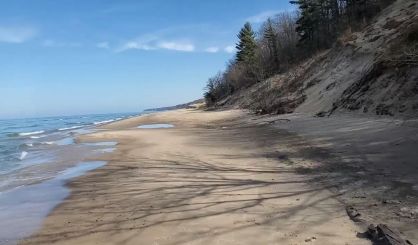
Great Lakes water levels in 2021 are tracking below last year’s levels, although Lakes Superior, Michigan, Huron, St. Clair, and Erie remain well above long-term average levels. That’s according to the U.S. Army Corps of Engineers, which tracks and forecasts Great Lakes water levels. The Corps says since November, the Great Lakes basin experienced four consecutive months of below average precipitation. That combined with a cold air outbreak during February led to increased evaporation across the lakes and caused a St. Clair River ice jam to develop. When ice jams occur, water levels downstream decline, while water levels upstream rise. The most recent six month forecast of Great Lakes water levels predicts the levels to remain below record high levels, but above average on all the lakes, except Lake Ontario, which is average. The Army Corps says even with lower lake levels, some lakes are still well above average and coastal flooding and shoreline erosion are still possible, especially during periods of active weather and high wave action.






